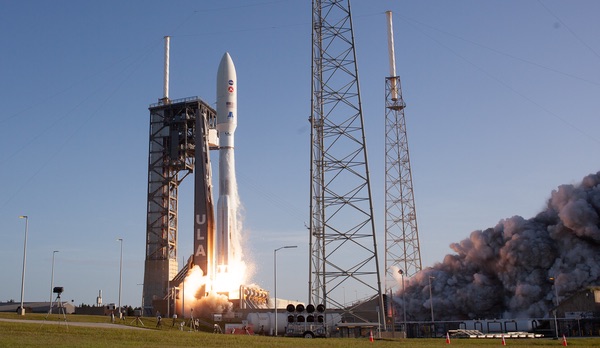How the “Department of Exploration” supports Mars 2020 and moreby Paul Dabbar
|
| Peseverance will explore Mars thanks to power supplied by the Department of Energy (DOE), which may be better dubbed the “Department of Exploration.” |
Specifically, DOE’s Idaho National Lab has supplied the Multi-Mission Radioisotope Thermoelectric Generator (MMRTG – think Mark Watney in The Martian), which will provide heat and power to Perseverance as it spends at least a Mars year (687 Earth days) searching for signs of past microbial life, collecting rock and soil samples for a possible return to Earth, and further opening the way for future human missions to the Moon and Mars.
Plutonium-238 (Pu-238), the fuel for the MMRTG, was supplied by DOE’s Oak Ridge National Laboratory. Last year the lab automated a key part of the production process for Pu-238, eliminating a bottleneck and moving closer to NASA’s goal of producing 1.5 kilograms per year by 2025, which will further empower space exploration. And if the Perseverance mission goes further, so will its MMRTG, with an operational lifespan of some 14 Earth years.
DOE is playing another critical part in the Perseverance mission through the rover’s SuperCam, which was supplied by Los Alamos National Laboratory. Dubbed the “Swiss Army Knife” of instruments and mounted atop the rover’s mast, the SuperCam will be able to determine the minerology, chemistry, and even molecular and atomic composition of rocks and soils, by firing a laser to study targets more than six meters away.
In concert with NASA’s mission objectives, the SuperCam will search for signs of ancient microbial life, as well as identify elements in the Martian dust that may be harmful to future human explorers. It will even be able to dust off rock targets, allowing the rover’s instruments to have a clearer view.
In fact, the scientists and engineers at DOE’s National Labs have long been providing a clearer view of the solar system and expanding universe.
DOE has enabled space exploration on nearly 30 missions for the past 50 years, including the Curiosity rover currently on Mars, the Galileo mission to Jupiter, the Cassini mission to Saturn, and the Voyager and New Horizons missions to the outer edges of our solar system and beyond.
Scientists at DOE’s Berkeley Lab, led by Luis Alvarez, proved that an asteroid about the size of San Francisco crashed into Earth some 65 million years ago, leading to the demise of the dinosaurs.
More recently, Saul Perlmutter, another outstanding researcher at Berkeley Lab, shared the 2011 Nobel Prize in Physics for his discovery of dark energy and the accelerating expansion of the Universe.
| Persistent power, determined engineering, and sustained innovation: all three are reasons why DOE is delighted to support the Mars 2020 Perseverance mission. |
Since then, DOE has continued to build on Dr. Perlmutter’s breakthrough. This past January, the Dark Energy Survey (DES), an international collaboration hosted by DOE’s Fermi National Accelerator Laboratory, finished a six-year survey of more than 300 million distant galaxies. The 50 terabytes of data it collected are now being analyzed to provide more insight into the nature of dark energy.
The centerpiece of the effort was the Dark Energy Camera, also built by DOE. The survey and the camera have made a number of other notable discoveries, including 12 new moons of Jupiter, many more dwarf satellite galaxies of our Milky Way, and the detection of the first visible counterpart of gravitational waves.
Berkeley Lab’s Dark Energy Spectroscopic Instrument is poised to pick up that work. It will gather the light of tens of millions of galaxies, helping scientists map the universe in three dimensions from the nearby universe out to 11 billion light years. That could reveal further insights into dark energy, the life cycle of galaxies, and the cosmic web that connects matter across the universe.
Yet exploration often needs the human touch, and in that, DOE is proudly partnering with NASA on program activities that support America’s return to the Moon, its next giant leap to Mars, and its future beyond. In particular, we are working together to demonstrate surface fission reactors that will supply the needed power for human outposts on the Moon, and eventually Mars.
This giant leap, to the Moon and then Mars, is thanks to President Trump’s leadership, his revitalization of our space program and insistence we can go further and higher.
Persistent power, determined engineering, and sustained innovation: all three are reasons why DOE is delighted to support the Mars 2020 Perseverance mission.
Note: we are temporarily moderating all comments submitted to deal with a surge in spam.
